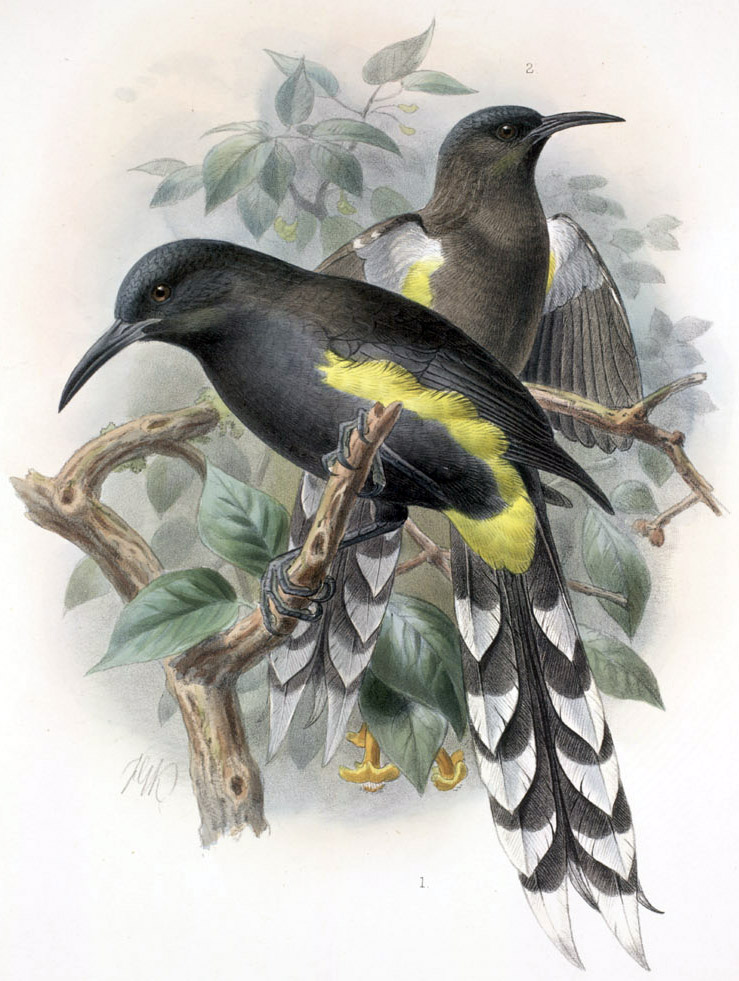Oʻahu ʻŌʻō

Names
- Common Name: O‘ahu ‘ō‘ō
- Scientific Name: Moho apicalis
Song
No available recordings.
Conservation Status
Extinct. Last seen in the wild in 1837.
Species Information
The Mohoidae family colonized Hawaiʻi 14-17 million years ago. These Hawaiian honeyeaters pollinated the lobeliad plants that have existed in Hawaiʻi for 13 million years (Fleisher and McIntosh 2001, Fleischer et al. 2008, Banko and Banko 2009). Very little is known about this historic species, beyond the Native Hawaiian’s use of their yellow feathers in featherwork (Lepson 1998).
Distribution
Oʻahu. Specimens were collected around Honolulu in the Koʻolau Mountains, but Olson and James (1982b, in Pyle & Pyle 2017) also found subfossil evidence of the Moho genus at Barber’s Point.
Threats
The exact threat that lead to Oʻahu ʻōʻoʻs extinction is uncertain. However, the species was likely susceptible to the same factors that threaten other native Hawaiian forest birds, including loss and degradation of habitat, predation by introduced mammals, and disease.
Photos

John Gerrard Keulemans, Public Domain via Wikimedia
Additional Resources
Pyle, R.L., and P. Pyle. 2017. The Birds of the Hawaiian Islands: Occurrence, History, Distribution, and Status. B.P. Bishop Museum, Honolulu, HI, U.S.A. Version 2 (1 January 2017) http://hbs.bishopmuseum.org/birds/rlp-monograph
Fleischer, R. C., James, H. F., & Olson, S. L. (2008). Convergent Evolution of Hawaiian and Australo-Pacific honeyeaters from distant songbird ancestors. Current Biology, 18(24), 1927-1931.
Fleischer, R. C., & McIntosh, C. E. (2001). Molecular Systematics and Biogeography of the Hawaiian avifauna. Studies in Avian Biology.
Lepson JK. 1998. Notes on appearance and speculated behavior of the O’ahu ‘O’o (Meliphagidae). Pac Sci 52(3): 210-219.
